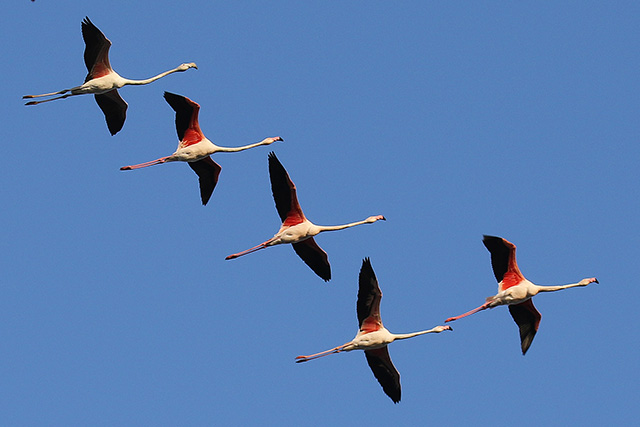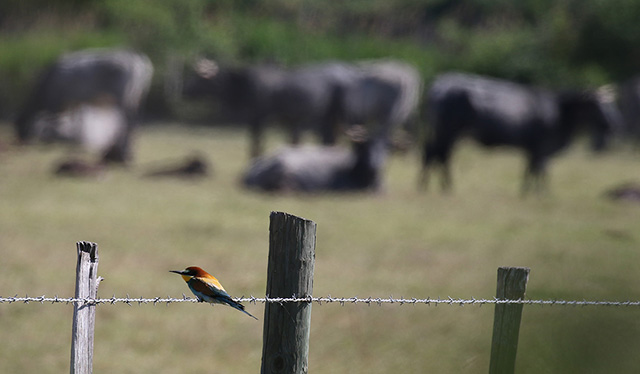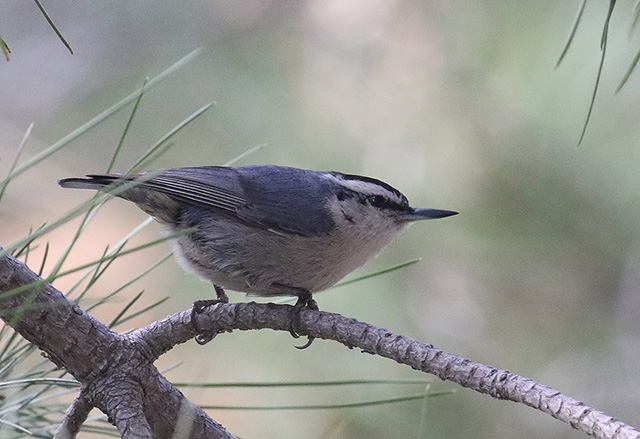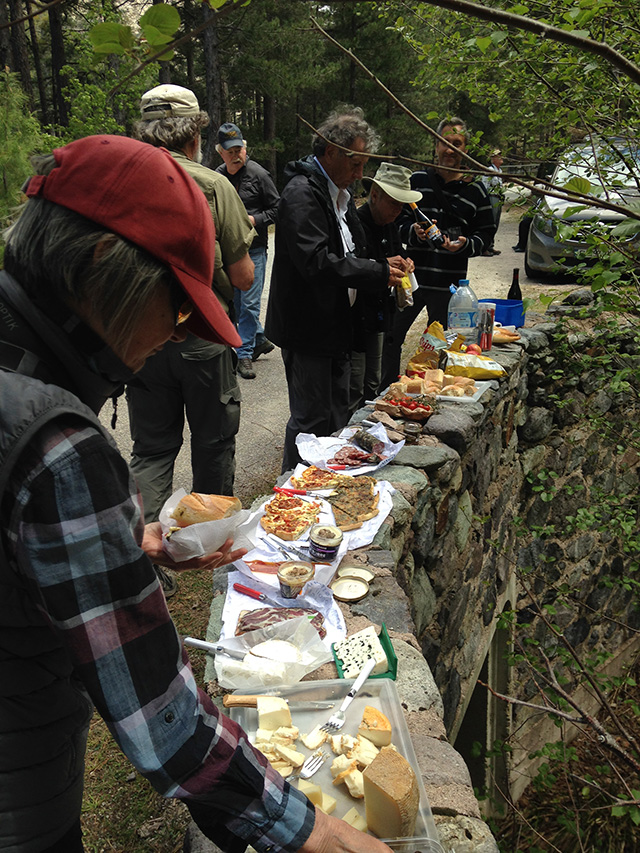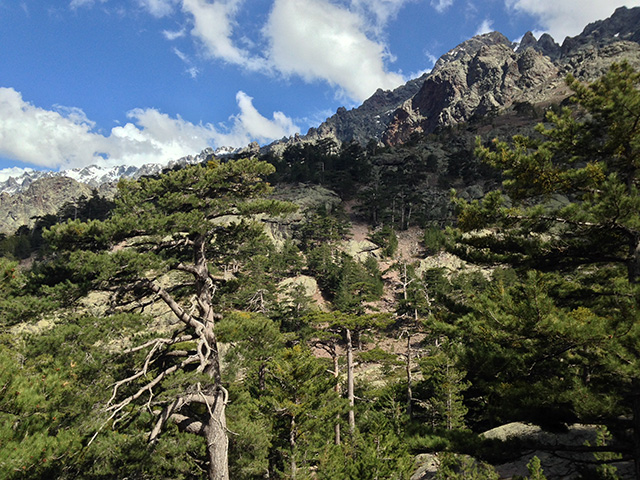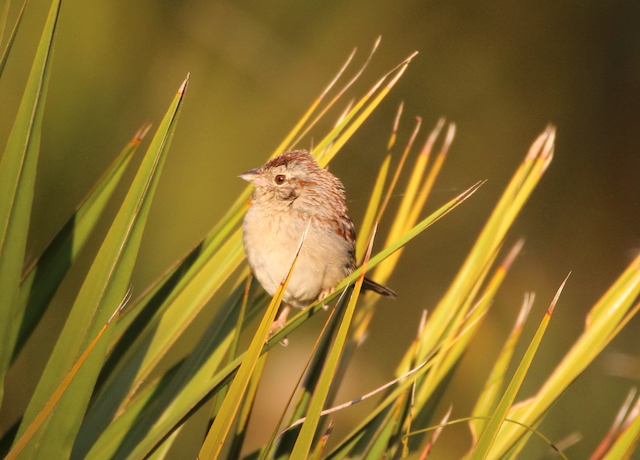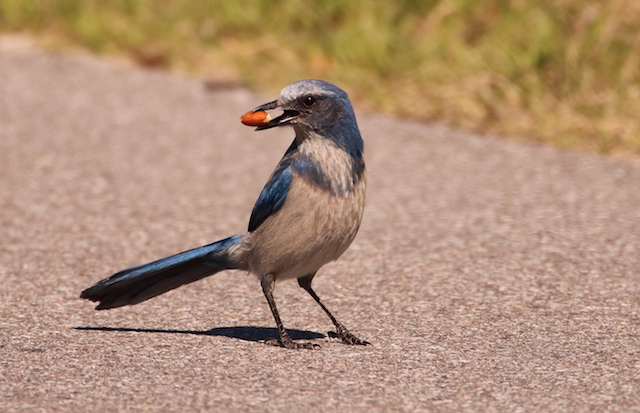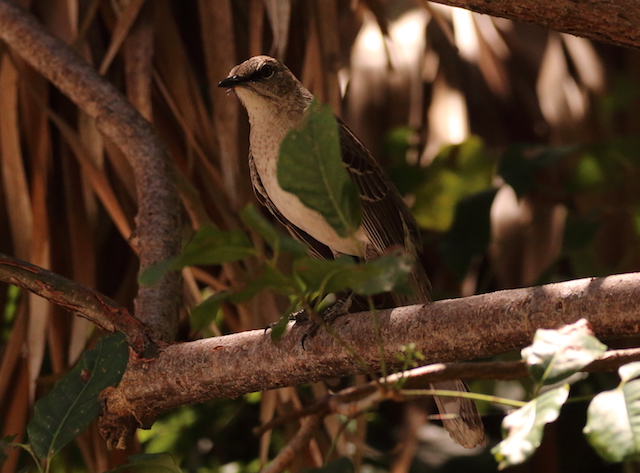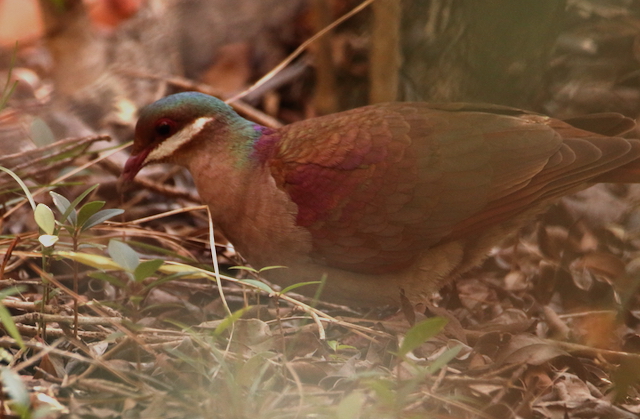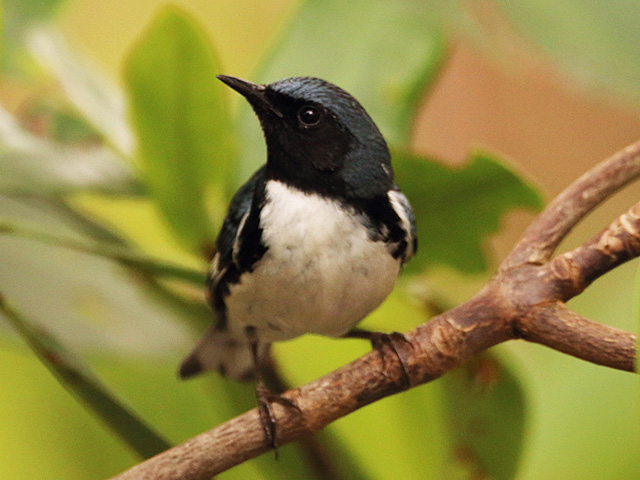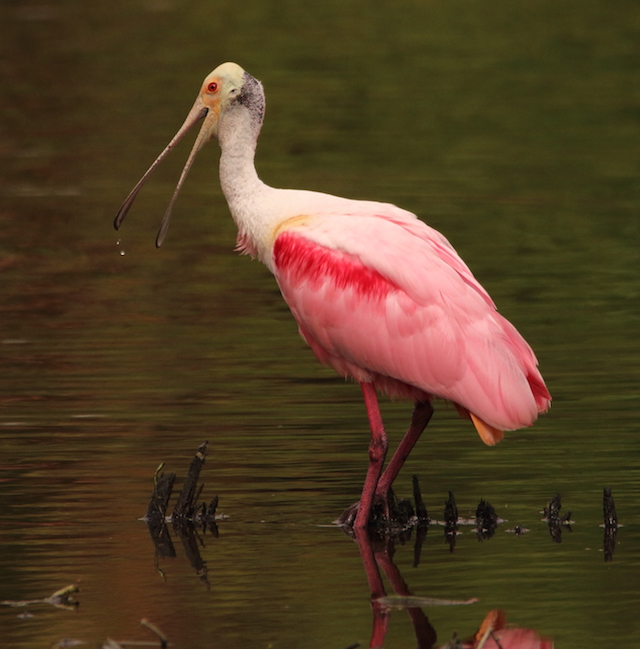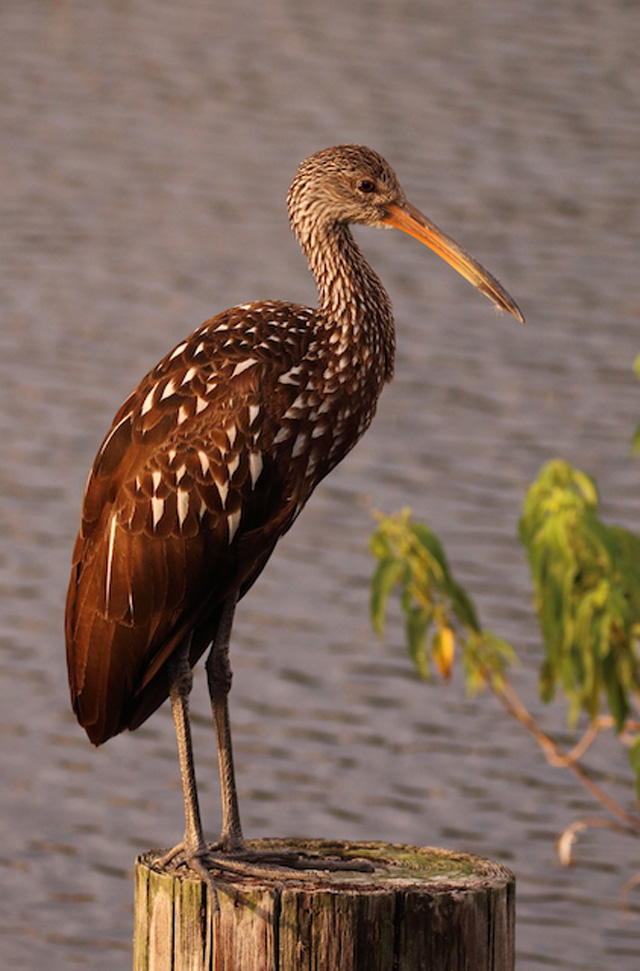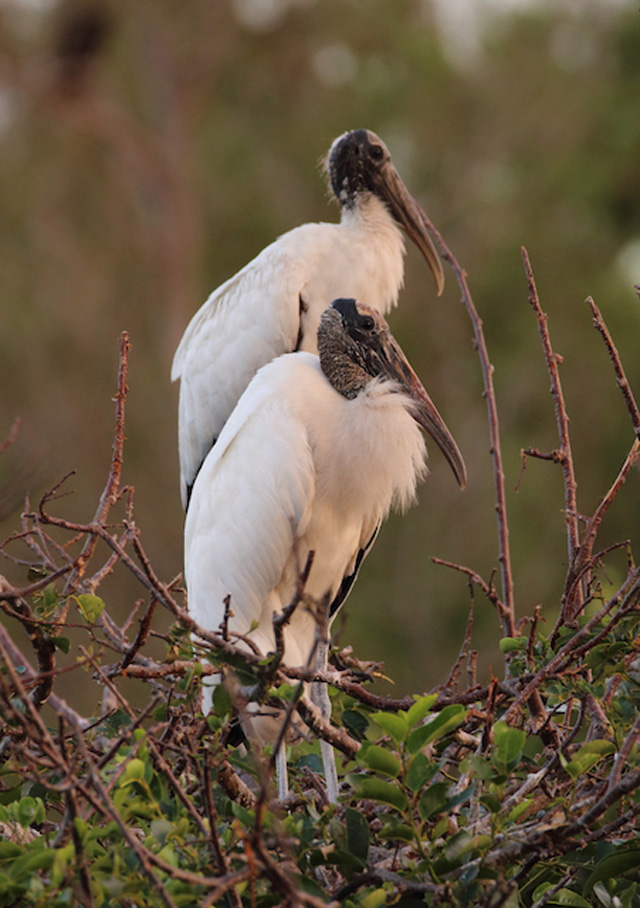From the Field
September 17:
Susan Myers on her recently completed tour, Borneo: Sabah
As we’ve come to expect over many years, our Borneo experience was full of fabulous bird sightings, as well as amazing mammals, reptiles, amphibians, insects and plants. In this incredibly biodiverse part of the world it’s very difficult to choose highlights - there are just too many to list here. What a great problem to have! We divided our time on this fourth largest island between four main sites: the montane forests of Mount Kinabalu, the lowland swamp and riparian forests of the Kinabatangan River and lastly in the hill forests of Tabin and the Danum Valley.
On Mount Kinabalu we sort of managed the Whitehead’s hat trick, although one of them, the spiderhunter, was a brief flyover. But the Whitehead’s Trogon and Broadbill more than made up for that minor disappointment!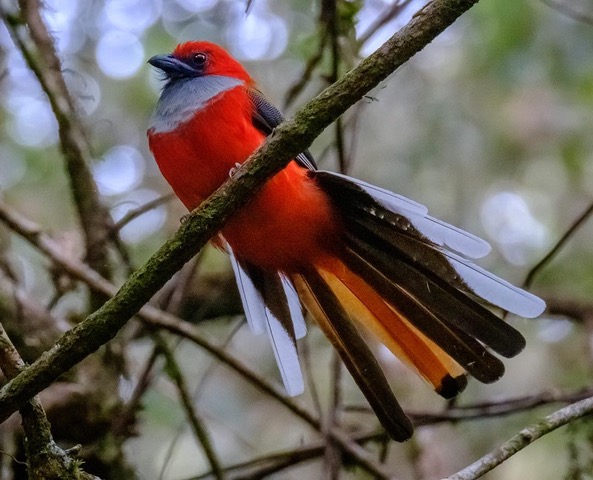
Whitehead’s Trogon
We encountered most of the montane endemics as well. Birds with evocative names such as Golden-naped Barbet, Bornean Stubtail, Mountain Wren-Babbler and Crimson-headed Partridge, to name but a few.
Moving on to our next site on the Kinabatangan, we made a detour to check out the three species of swiftlet nesting in the Gomantong Caves. We waited until dusk to see the incredible spectacle of thousands and thousands of bats exiting the caves for their nocturnal forays only to be preyed upon by the waiting Bat Hawks.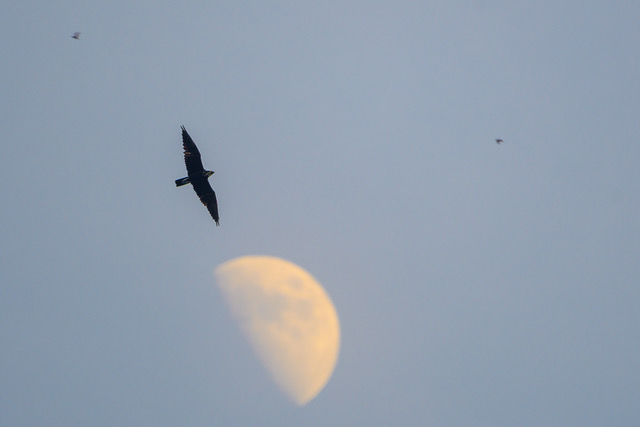
Bat Hawk
During our two days on the river, we birded by boat and found healthy numbers of the extraordinary Proboscis Monkeys, endemic to the swamp forests of Borneo. 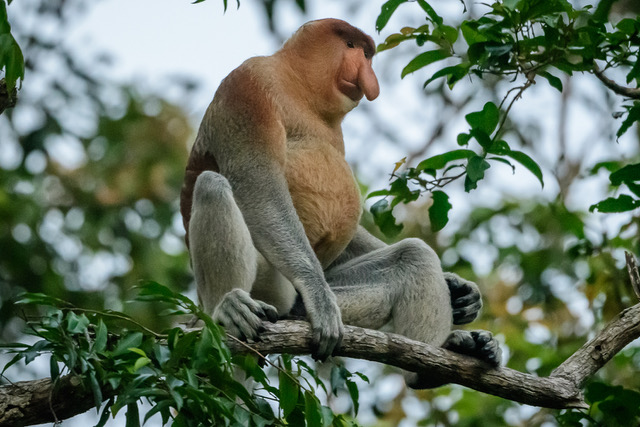
Proboscis Monkey
Of course, there were many birds, too and standout amongst them were the crazy-looking White-crowned Hornbills, a very lovely Hooded Pitta and gem-like Blue-eared Kingfishers.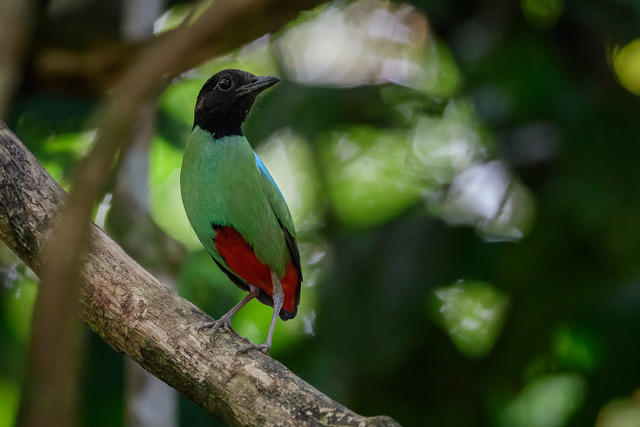
Hooded Pitta
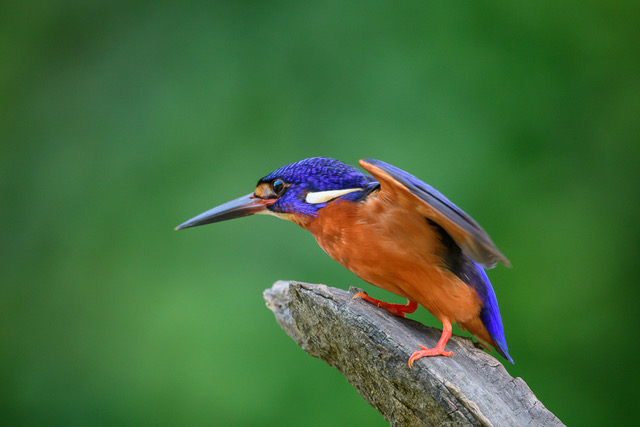
Blue-eared Kingfisher

White-crowned Hornbill
On top of that, and for the first time in a few years, we had fantastic views of a Bornean Pygmy Elephant as she fed and then swam across the river. A very memorable experience indeed!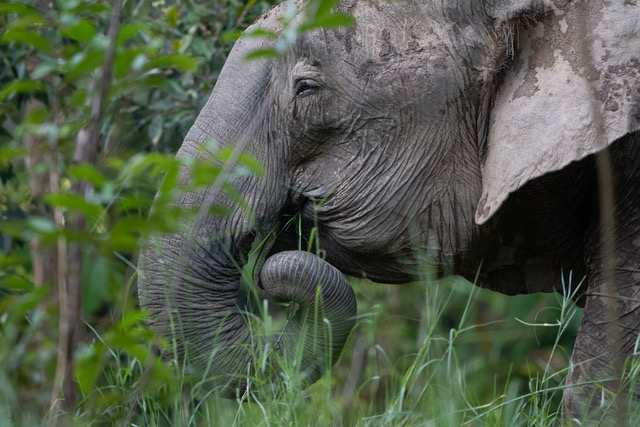
Bornean Pygmy Elephant
In the Tabin Wildlife Reserve we spent two days exploring the excellent forest and found much excitement in the form of Red-naped Trogon, Blue-headed Pitta and multiple species of spiderhunter - Thick-billed, Long-billed, Yellow-eared and Spectacled.
[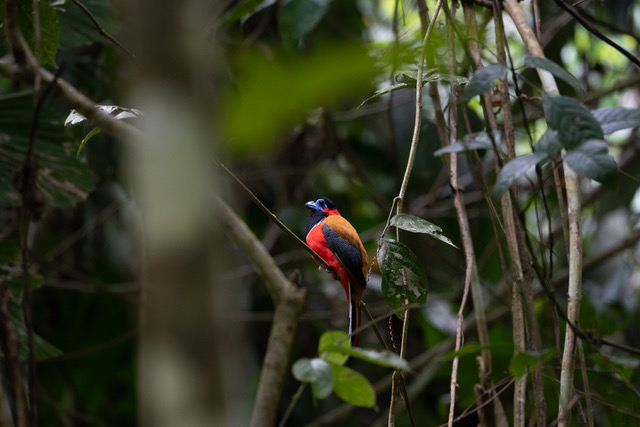
Red-naped Trogon
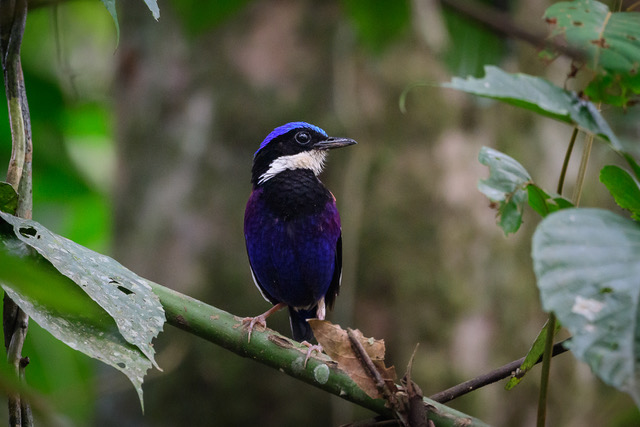
Blue-headed Pitta
A big highlight was this stunning beauty, a female Bornean Keeled Pit Viper.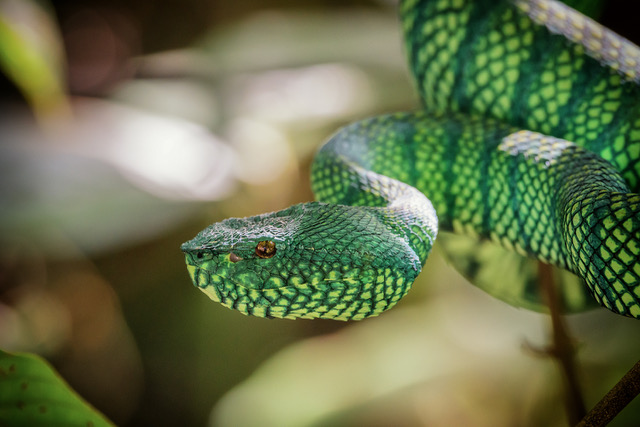
Bornean Keeled Pit Viper.
Our last destination was the incomparable Danum Valley, where we enjoyed a number of night drives the highlight of which was a Sunda Frogmouth, surely one of the world’s weirdest group of birds.
Sunda Frogmouth
During our day time birding, we had pheasants, pittas, wren-babblers, barbets, woodpeckers and so much more. And that’s just the birds - we also had an array of frogs, reptiles, insects (especially butterflies) and mammals. So much excitement. This area is surely one of the best places to be a naturalist anywhere - I wish I could spend a year here!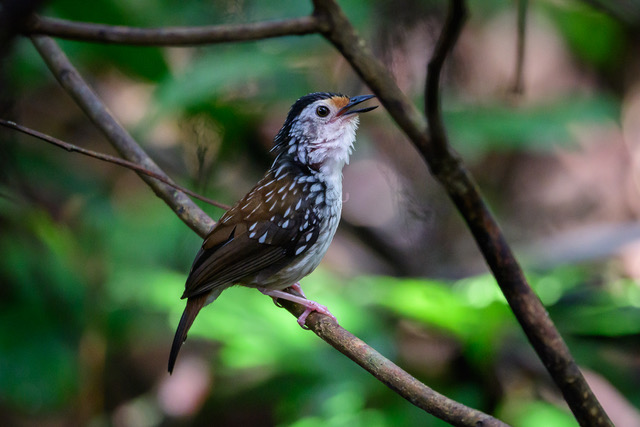
Striped Wren-Babbler
Bornean Crested Fireback (Pheasant)
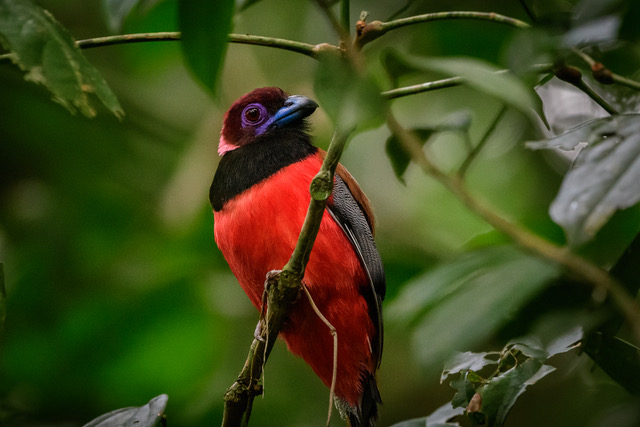
Diard’s Trogon
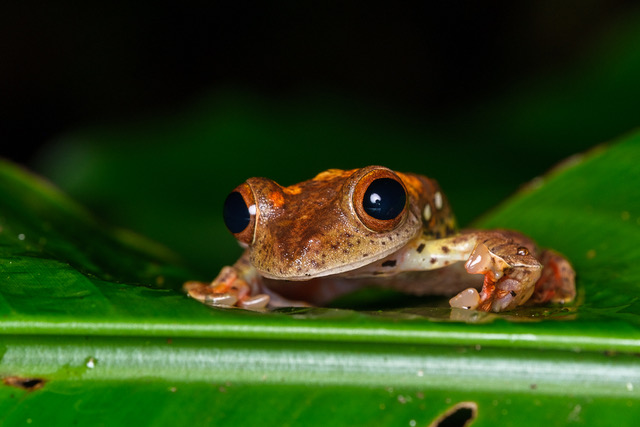
Harlequin Flying Frog
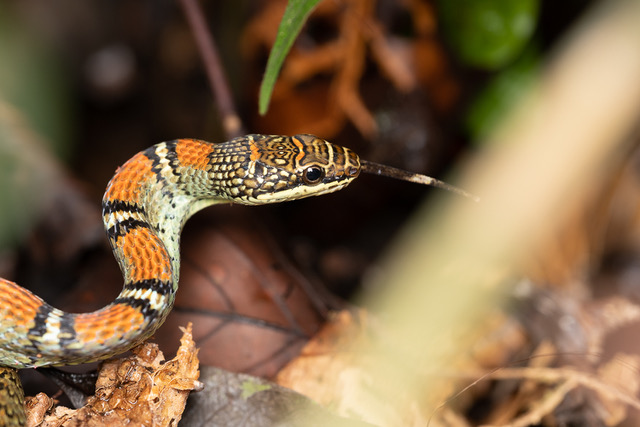
Twin-barred Tree Snake eating a Yoshii’s Bent-toed Gecko
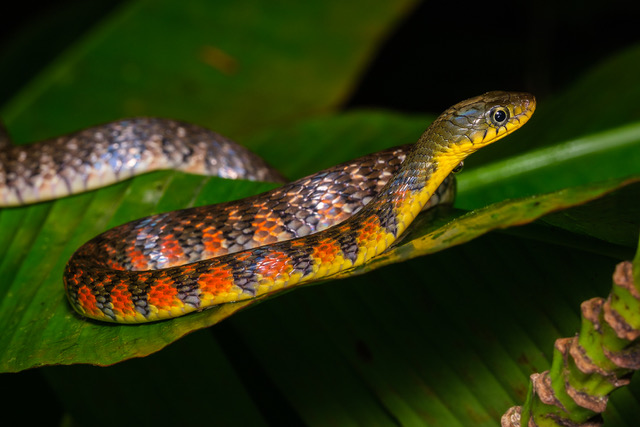
Triangle Keelback
Borneo is an unforgettable experience and there is literally never a dull moment. There really are very few places in the world that can match the extraordinary biodiversity of this amazing island!
August 11:
Derek Lovitch on his recently completed tour, Maine and New Hampshire
Covering over 1300 miles in eight full days of birding (all in Maine except for about 20 hours in New Hampshire), we tallied 158 species of birds. While this was a few species below our long-term average – mostly due to an afternoon limited by high winds and a morning lost to heavy rain – none of our priorities were missed. Twenty-three species of warblers (including Mourning and Bay-breasted), 13 sparrows (including Nelson’s and Saltmarsh), seven thrushes (yes, including Bicknell’s), six flycatchers, five terns (including lots of Roseate and Arctic), five vireos, and four alcids were recorded.
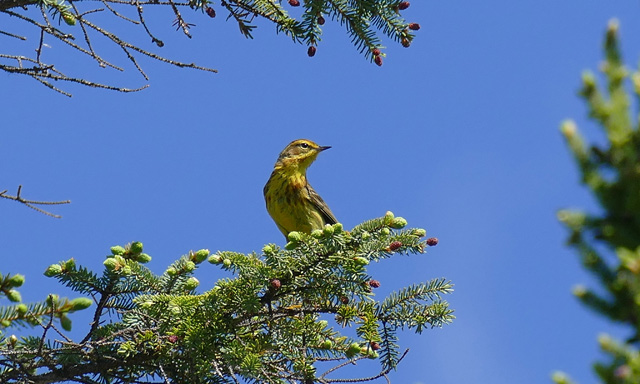
Palm Warbler
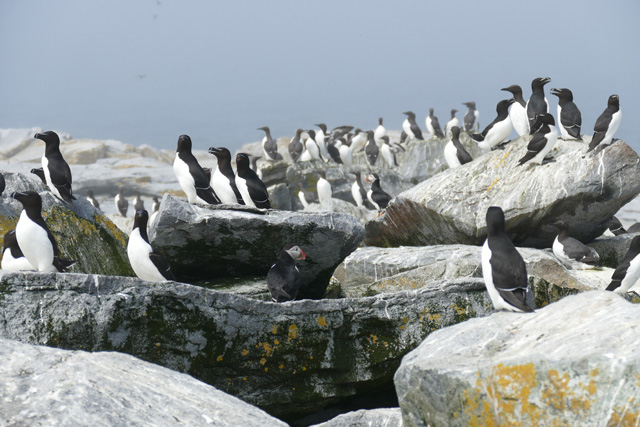
A mix of Alcids on Machias Seal Island
All of the major resident boreal species (e.g. Black-backed Woodpecker, Spruce Grouse, Boreal Chickadee, and Canada Jay) were exceptionally well-seen. We caught up with a Little Egret – a species (perhaps an individual) that has become a fixture in summer in southern Maine for the last five years.
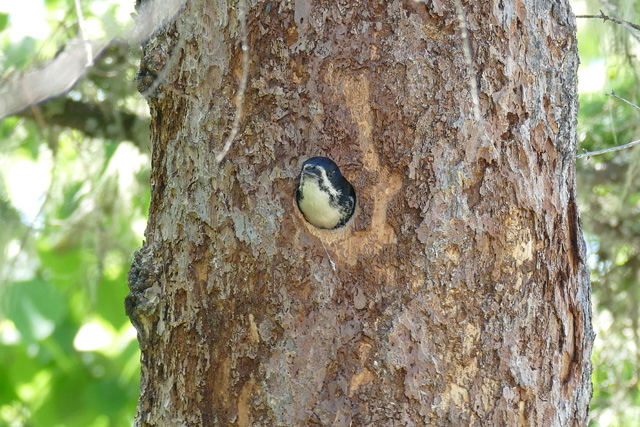
A female Black-backed Woodpecker peering from a nest hole
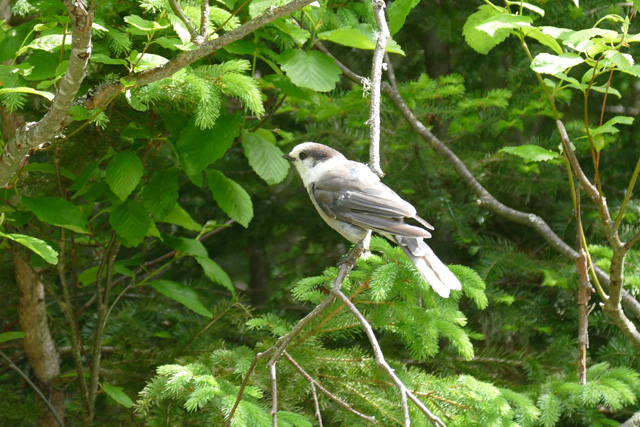
Canada Jay
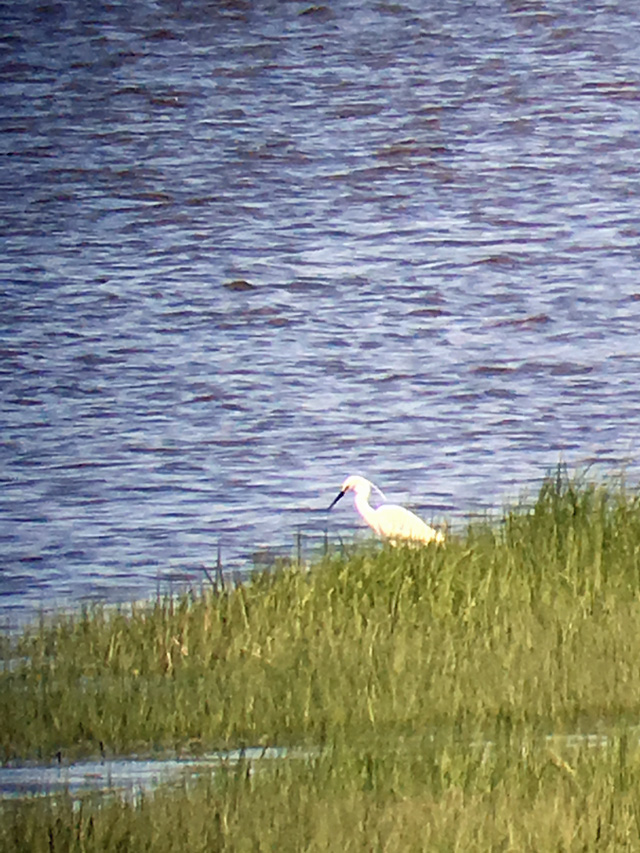
Little Egret
With many species reaching the northern limits of their breeding range in southern Maine, and many species reaching the southern or southeastern limits of their breeding range in Western and Eastern Maine, we covered a remarkable diversity of habitats in order to record as many of them as possible. We started in the saltmarshes and dunes of Maine’s southwestern Coast, surrounded by Saltmarsh and Nelson’s Sparrows (and hybrids thereof), Roseate Terns, Piping Plovers, and a variety of wading birds at the absolute northernmost limit of their breeding range. By the end of the second day, we are almost 6000 feet higher, being serenaded by Bicknell’s Thrushes and Blackpoll Warblers near the top of Mount Washington on an exclusive after-hours tour.
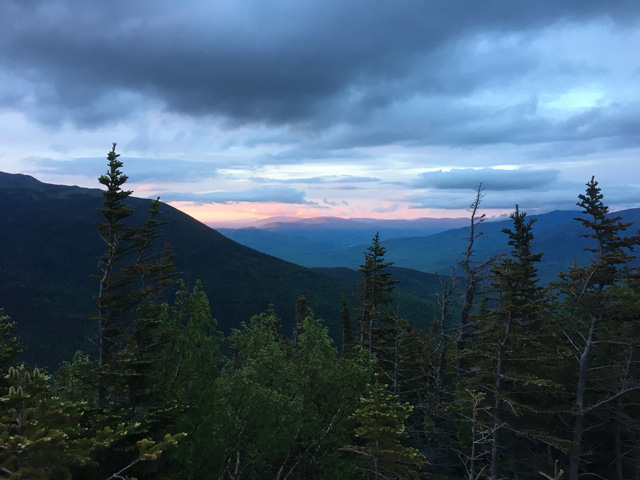
The White Mountains of New Hampshire
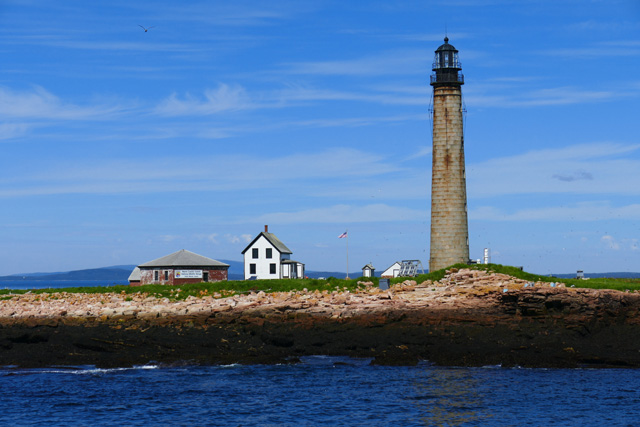
One of more than 60 lighthouses, most of them active, on the Maine coast
Then, we worked our way across the state – through boreal forests and lowland lakes and marshes – to arrive “Downeast” where we saw Spruce Grouse and Bay-breasted Warblers and visited an offshore island to get up close and personal with the region’s famous breeding seabirds.
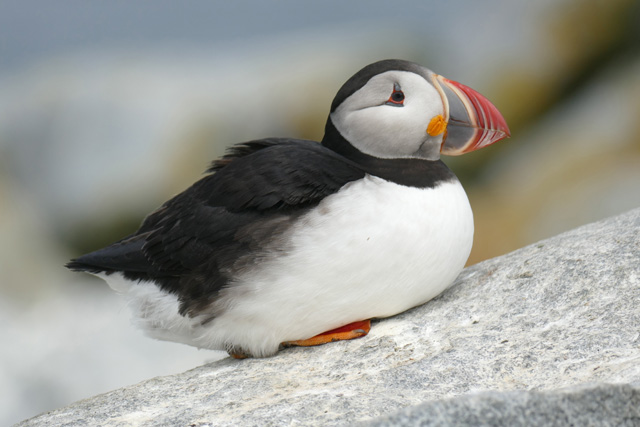
Atlantic Puffin
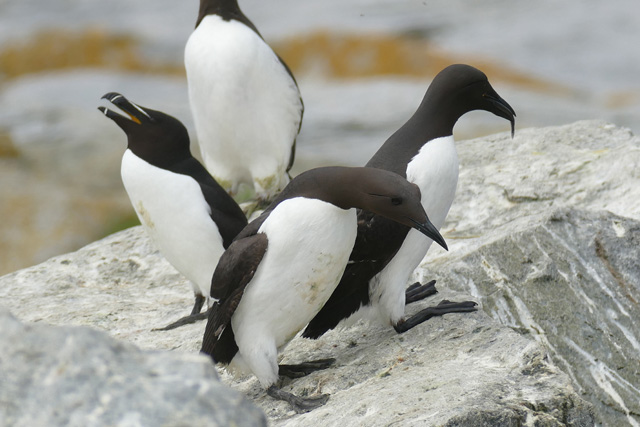
A Razorbill and Common Murres.
Oh, and plenty of lobster was consumed!

Yum...
July 29:
Gavin Bieber and Jake Mohlmann on the main section of their recent tour, Alaska: Majesty of the North
Our Alaska Majesty Tour found above average temperatures and a very advanced spring throughout the state, with remarkably nice weather for the entire trip. We started around Nome, which was, as ever, amazing; an excellent wildflower show, point blank views of birds like Rock Ptarmigan, Harlequin Duck, Gyrfalcon, Aleutian Tern, and the dazzling Bluethroat (still in its active song flight courtship stage) as well as a good showing by a pair of Bristle-thighed Curlews on the Kougarok Road.
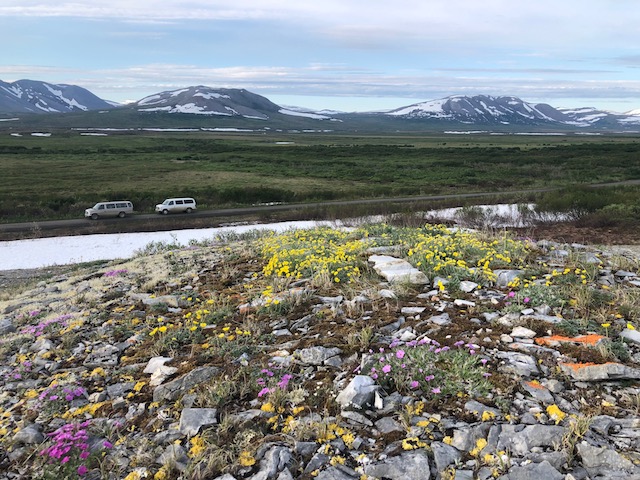
Wildflowers in Nome
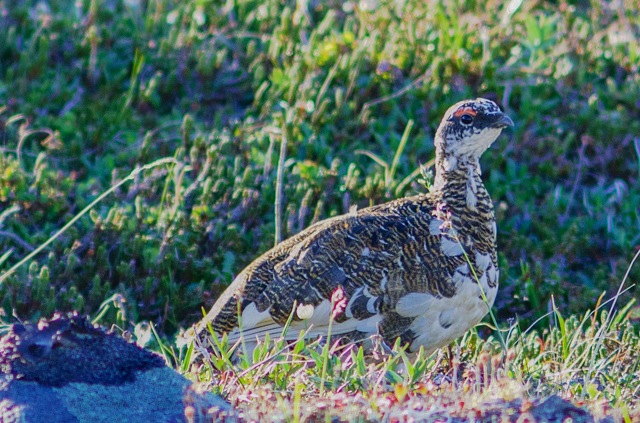
Rock Ptarmigan
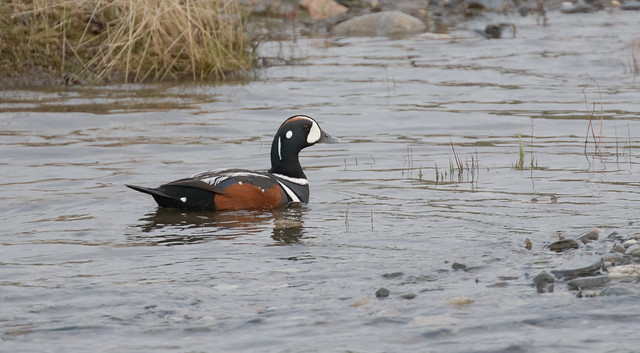
Harlequin Duck
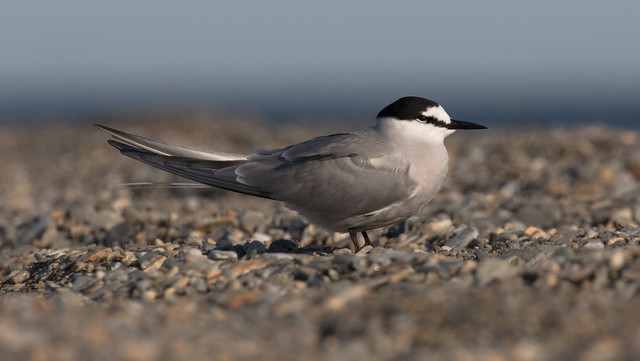
Aleutian Tern
We then moved inland, traveling through the amazingly scenic Alaska range and the Denali region. Here we found Smith’s Longspurs on territory, a cooperative (with quite a bit of searching) Northern Hawk Owl perched atop a roadside spruce tree and both Black-backed and American Three-toed Woodpeckers lurking in a recent burn.
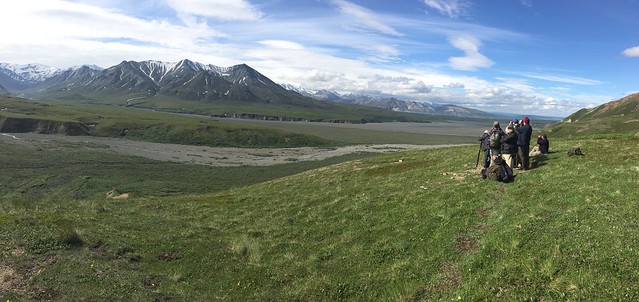
An Alaska scene
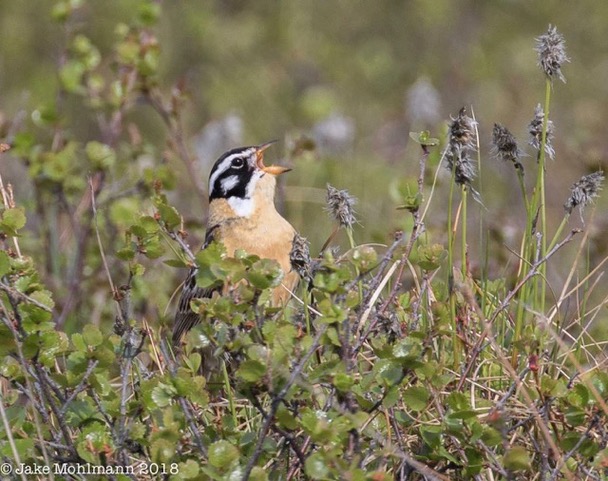
Smith's Longspur
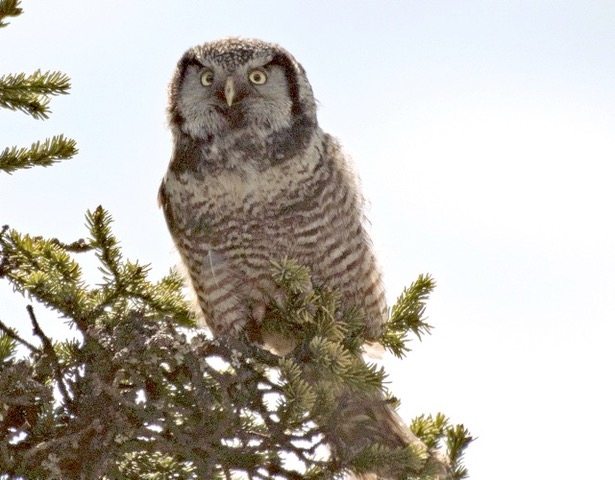
Northern Hawk Owl
Our final area for the main tour was Seward, where we found the beautiful Resurrection Bay under full sun, with flying Humpback Whales, many close Orca, and an amazing 10 species of alcids including more than a dozen Kittlitz’s Murrelets.

Resurrection Bay
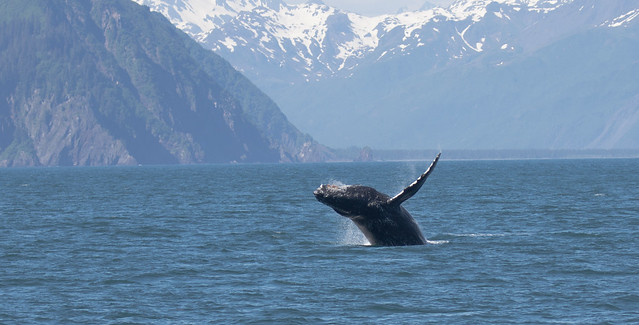
Hump-backed Whale
In all we tallied about 166 species on the main tour, and 189 including the extensions to Saint Paul Island and Barrow. The variety and abundance of birdlife and wildlands on this tour is staggering, and make it arguably the most exhilarating birding and natural history tour available in North America if not the world.
July 17:
Susan Myers on her recently completed tour, Japan in Spring
Our spring Japan tour is all about the endemics which means a lot of island hopping! We started our journey at Karuizawa on Honshu. In spring the forests resonate with the songs of newly arrived migrants. We had great luck with handsome Japanese Green Woodpeckers and Yellow Bunting. Exploring nearby fields, we found a number of species that prefer more open areas, including Green Pheasant, Chestnut-eared Buntings, Bull-headed Shrikes, and Eurasian Skylarks.
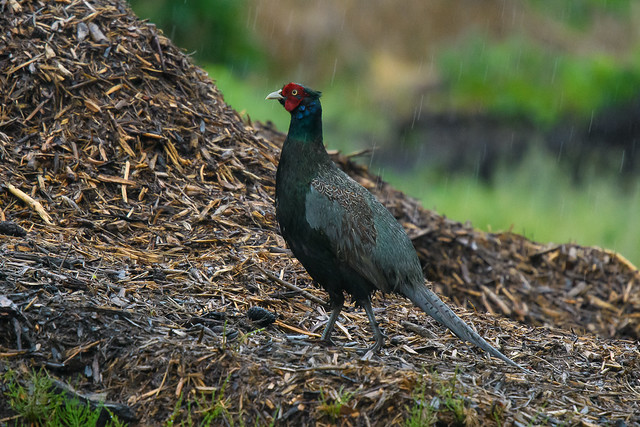
Green Pheasant
Our next destination was that Japanese icon, the almost perfect Mount Fuji. This year she was magnificent during our stay as she burst through some early morning cloud. We explored the slopes of Fujisan and found Japanese Accentors, as well as many gorgeous Red-flanked Bluetail in stunning breeding plumage.
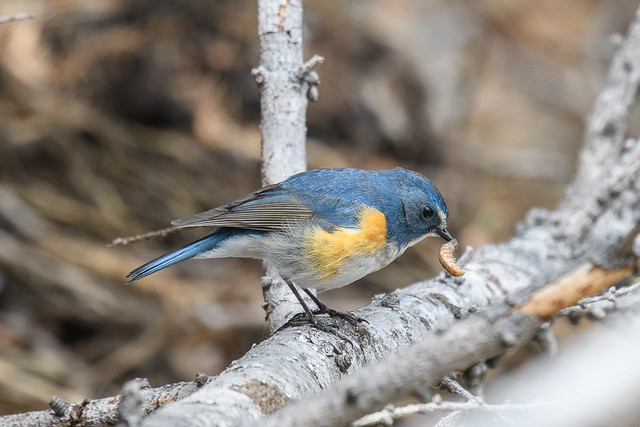
Red-flanked Bluetail
Heading to Miyakejima in the Izu Islands we were ably assisted by my friend Hitomi san and found all our targets– Izu Thrush, Iijima Leaf Warbler, Japanese Wood Pigeon, Japanese Robin, Winter Wren and Owsten’s Varied Tit. The highlight of our stay here was the highly restricted Styan’s Grasshopper Warbler, which showed amazingly well.
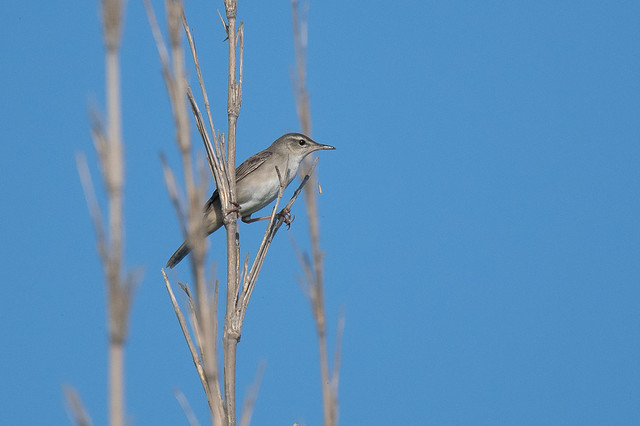
Styan’s Grasshopper Warbler
On Okinawa we immersed ourselves in the quiet and very beautiful forests of Yanbaru National Park that protects so much of the island’s unique flora and fauna. Our two main targets – the Okinawa Rail and Pryer’s Woodpecker cooperated very nicely, with a total of 17 rails seen!
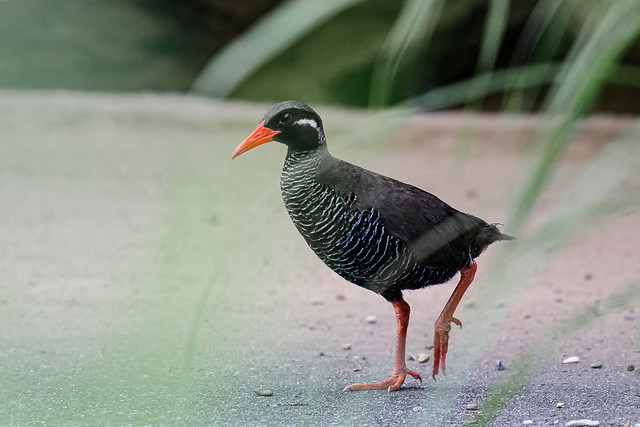
Okinawa Rail
Our next island hop was further south to the delightful island of Ishigaki. Here we met up with a local naturalist, Kobayashi san who knew all the spots and we drove right up to Ryukyu Scops Owl and Northern Boobook, Malaysian Night Heron and Ryukyu Serpent Eagle, which all posed perfectly for us. Ruddy Kingfishers seemed to be everywhere!
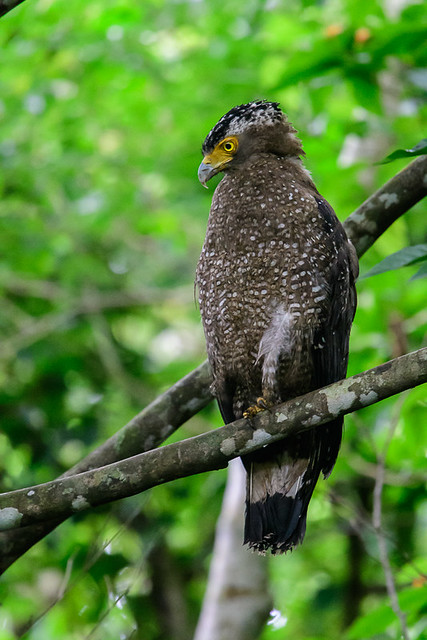
Ryukyu Serpent Eagle
Our last stop was the lovely, laid back island of Amami Ōshima where we explored the convoluted backroads meandering through the forests not just for birds but for the remarkable short-eared Amami Black Rabbit. We found elegant Ryukyu Flycatchers (split from Narcissus, and rightly so), Ryukyu Minivets, and Red-capped Green Pigeons as well as Lidth’s Jay and a family group of five Amami Woodcocks.
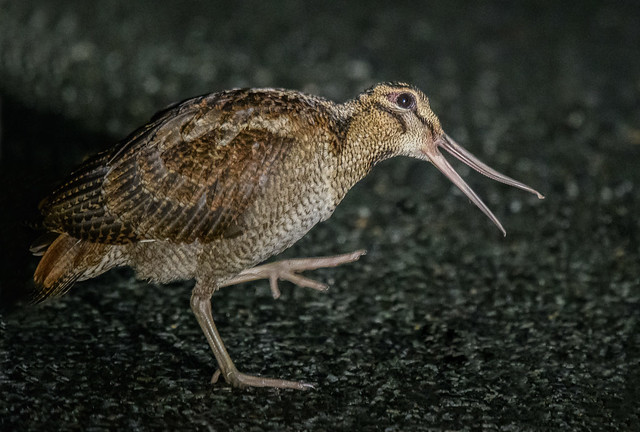
Amami Woodcock
July 16:
Fabrice Schmitt and Pierre Defos Du Rau on their recently completed tour, France: Birding à la Française - Birds, Wine and Cheese in Southern France
After years of scouting little restaurants and testing local wines, we finally decided we were ready to propose a ‘Birding à la française’ tour...and it has been great fun!
We had fantastic encounters including stunning views on a male Black Grouse displaying atop a little pine tree in the Vercors, an impressive Eurasian Eagle Owl hunting by daylight, a group of Great Spotted Cuckoo surprising us with amazing views at very short distance in Camargue,
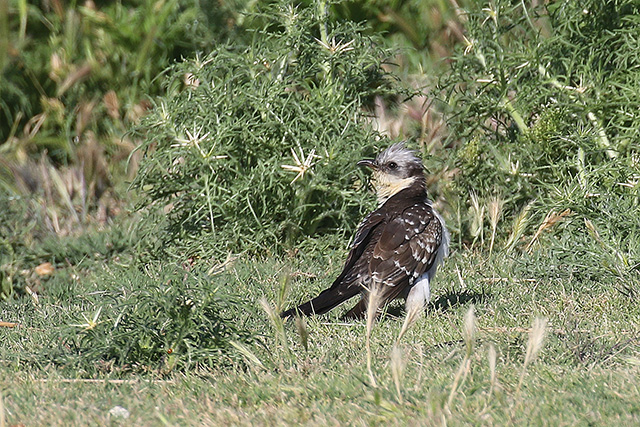
Great Spotted Cuckoo
superb views of the colorful European Bee-eater, elegant Scopoli’s Shearwaters seen so well from our ferry on the way to Corsica, and finally fantastic views of the very local Corsican Nuthatch and Marmora’s Warbler in Corsica.
Greater Flamingo
European Bee-eater
Corsican Nuthatch
Beside birds, we also had great memories of our splendid picnics during which we tested more than 15 different kind of cheese, several pâtés, hams, sausages and other sort of charcuterie, always coming with excellent bread and, obviously, fantastic wines.
A splendid picnic
The stunning flowering alpine meadows, the vast Camargue marshes and the dramatic Asco valley in Corsica were just a few of the many scenic places we travelled through during this succulent tour. We are already looking forward to the next edition!
The Asco valley
May 28:
Gavin Bieber on his recently completed tour, Arizona: Owls and Warblers
This year’s May tour fell in the middle of a mild and wet spring with temperatures significantly lower than average and migrant birds dispersed widely at all elevations including the greener than usual desert floor. Since it’s an owls and warbler trip our highlights often come from those groups. Among the nine species of owls detected, the cooperative Spotted Owl and inquisitive Whiskered Screech-Owl were memorably close.
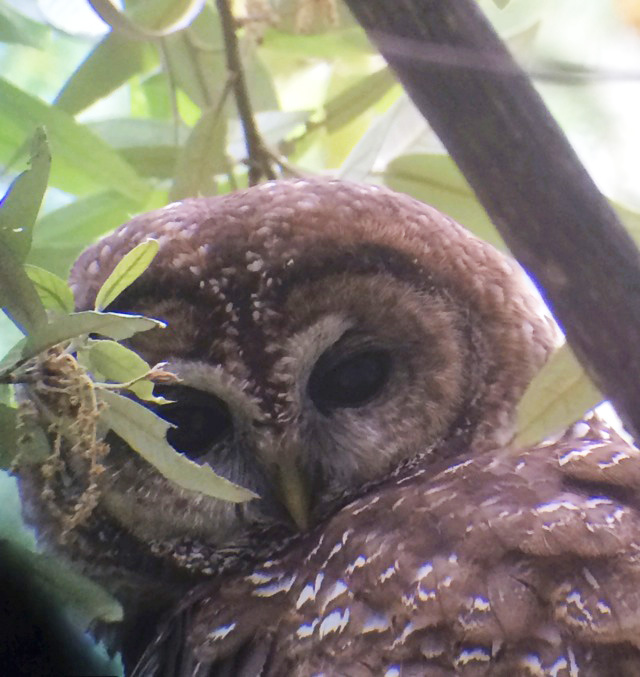
Spotted Owl
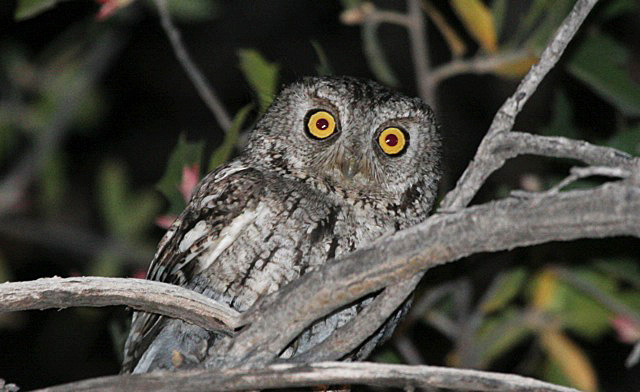
Whiskered Screech-Owl
As always, the warbler show was excellent, with our favorite local species likely the Red-faced Warbler.
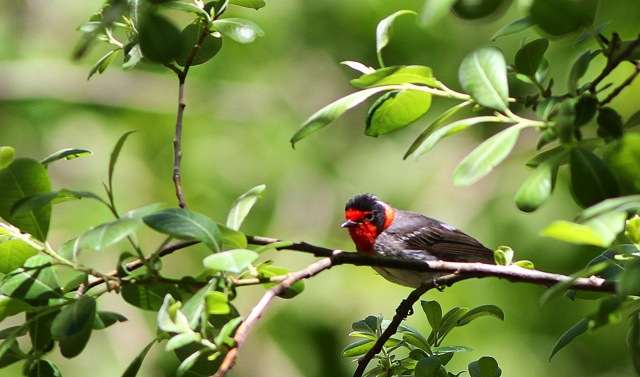
Red-faced Warbler
We also managed excellent views of several scarce border species such as nesting Black-capped Gnatcatchers and Buff-collared Nightjars, as well as the handsome Five-striped Sparrow which showed well at the south end of California Gulch.
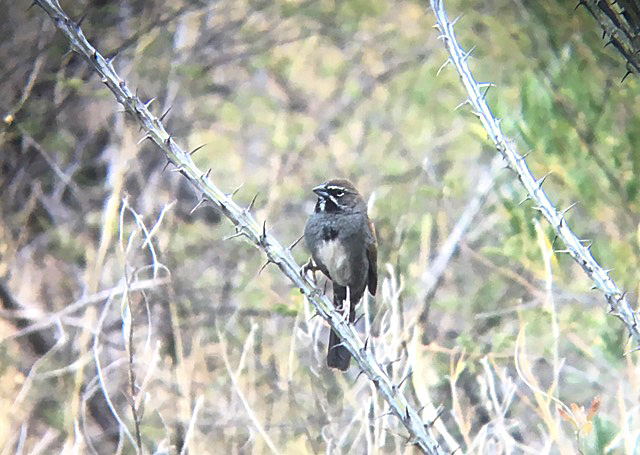
Five-striped Sparrow
As usual, hummingbirds are a focus of the tour as well, and we found seven species including several showy Blue-throated Hummingbirds.
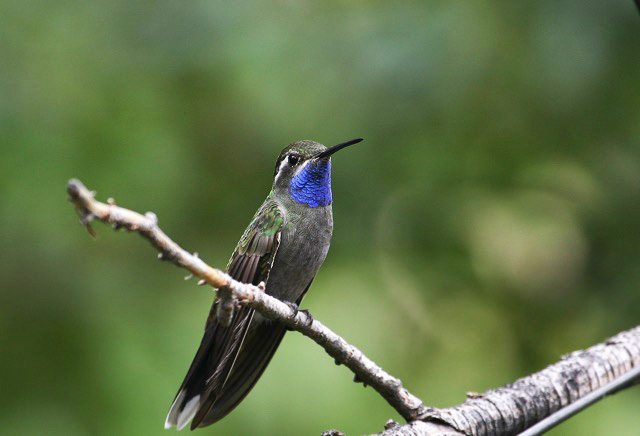
Blue-throated Hummingbird
We particularly enjoyed the nesting pair of Rose-throated Becards along the Santa Cruz River.
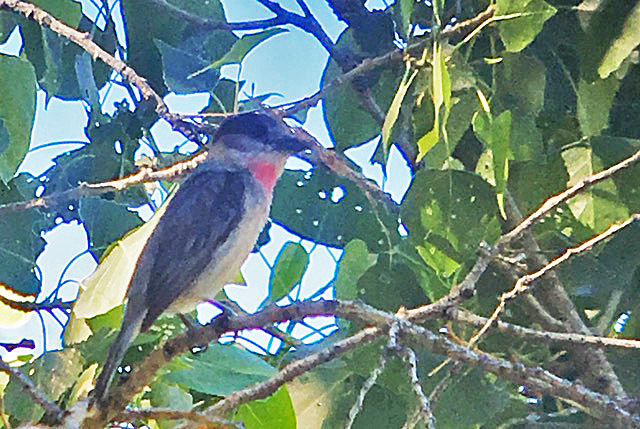
Rose-throated Becard
Combining a wide array of spectacular birds – 206 species this year, I think - with a nice supporting cast of mammals, reptiles and butterflies, and with fantastic desert landscapes, Southeastern Arizona always seems to provide a truly excellent tour!
May 22:
Luke Seitz on his recent tour, Guatemala
Our tour to Guatemala this year was nothing short of spectacular – it’s difficult to articulate just how much fun we had. Of course, I always try to make my tours sound as good as possible in the write-up...maybe embellishing just a little bit, or glossing over the more challenging days. For this tour, the only challenge will be finding enough unique superlatives to use in describing our outrageous views of rare and difficult birds, the great sense of humor shared by everyone in the group, and the memories of a trip that will go down as one of the best I’ll ever do!
We started off with some easy highland birding around the historic city of Antigua (with regional specialties like Blue-throated Motmot, Blue-and-white Mockingbird, and our first Pink-headed Warblers) before heading west towards Huehuetenango. The weather on the high plateau is unpredictable but our time here was beautiful, allowing for a full morning of birding among the pines and junipers with abundant Goldman’s Warblers…
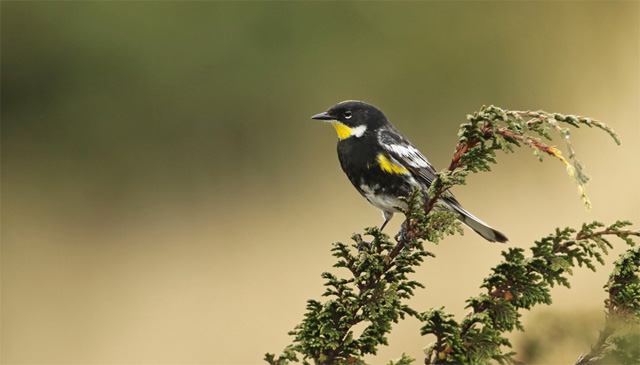
Goldman's Warbler
...and before long, it was time to head even further west, birding for two days on the slopes of Volcán Tacaná. The bamboo was seeding, so amazingly, we enjoyed mega views of a singing Maroon-chested Ground-Dove in the scope for fifteen minutes! Wow – arguably one of the most difficult and unpredictable species in the Neotropics.
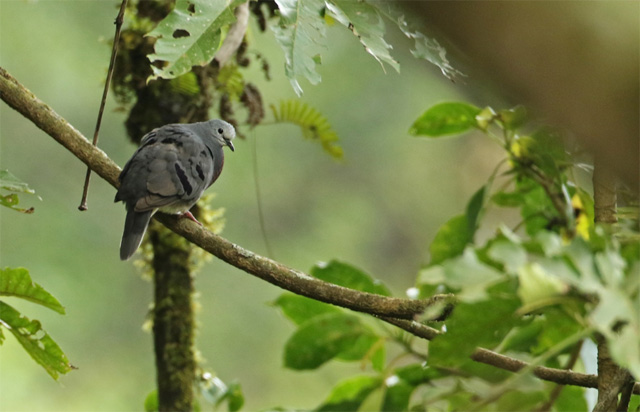
Maroon-chested Ground-Dove
One of the most sought-after species for any birder visiting Guatemala is the unique Pink-headed Warbler. It’s a fairly common bird, and it’s not too difficult to find a couple pairs in a morning of birding…but we were hardly expecting to see over SIXTY individuals in just a couple hours! We didn’t get bored of this stunner, though.
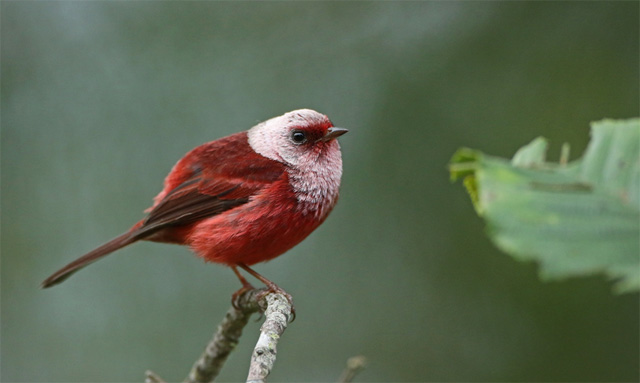
Pink-headed Warbler
Heading back east, we worked our way through various other birding locations in the highlands, with highlights too numerous to list…Fulvous Owls perched right over our heads, Azure-rumped Tanager singing in the scope, Bar-winged Orioles, Black-crested Coquette, outrageous views of White-faced and White-eared Ground-Sparrows, Slender Sheartail, Belted Flycatcher…our luck simply never ended. As our time in the highlands wrapped up, we looked forward to the Tikal extension…would our perfect trip continue? Unequivocally, yes, with cooperative Pheasant Cuckoos and Tody Motmots…
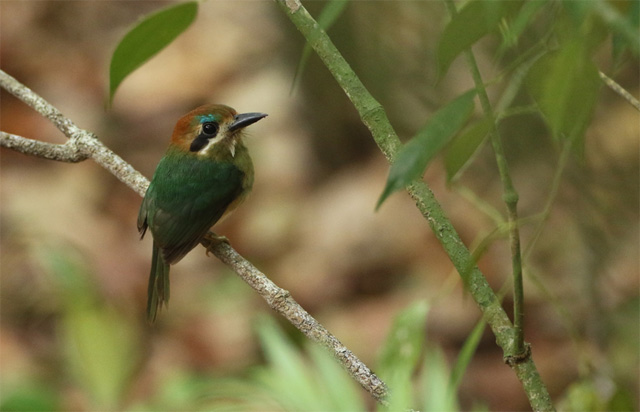
Tody Motmot
…and, most unexpected of all, JAGUAR! An adult quickly crossed the road in front of us, followed by this youngster, which paused for a solid 15 seconds as our group stared in disbelief. It’s difficult to describe the adrenaline rush and excitement that come with seeing a big cat in the Neotropics. Heart pounding, goosebumps, and nausea were all among my symptoms. Wow – I wonder what next year’s tour will hold?!
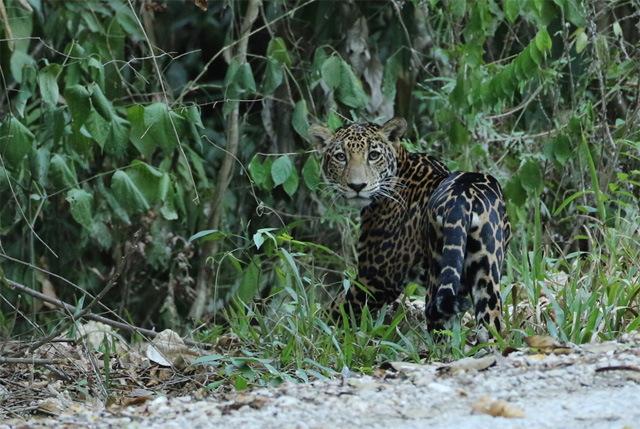
Jaguar!!
May 13:
Luke Seitz on his recent tour, Mexico: Oaxaca and Western Chiapas
Our tour through the varied habitats of western Chiapas and Oaxaca was, as usual, packed with memorable bird sightings and excellent Mexican food but a fun group helped a lot too.. Starting in the bustling city of Tuxtla Gutierrez, one of many highlights was the magnificent Sumidero Canyon……complete with views of the perky Belted Flycatcher.
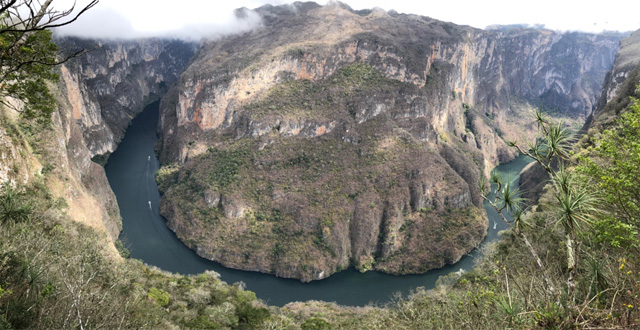
Sumidero Canyon
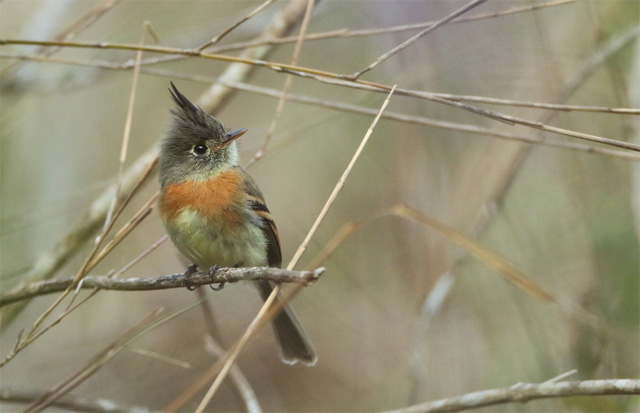
Belted Flytcatcher
We then dropped down the Pacific slope, making sure to stop in the foothills above Arriaga to see the stunning and very range-restricted Rosita’s (or Rose-bellied) Bunting…one of the top birds of the tour, for sure!
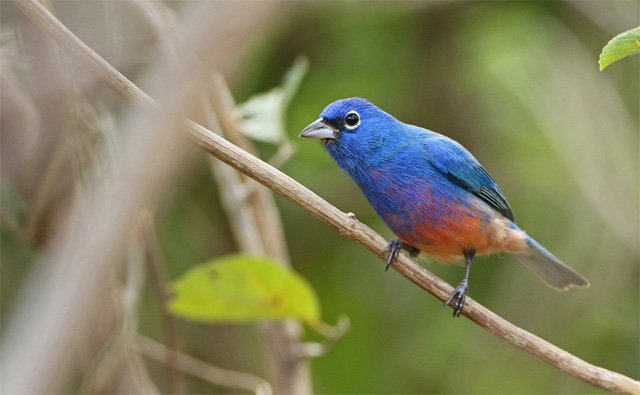
Rosita's Bunting
We spent some time exploring the lowlands around Puerto Arista before heading west across the isthmus of Tehuantepec, where habitats and birds changed accordingly. One of the targets near Tehuantepec is Sumichrast’s (or Cinnamon-tailed) Sparrow, which performed very well alongside Orange-breasted Buntings and Citreoline Trogons.
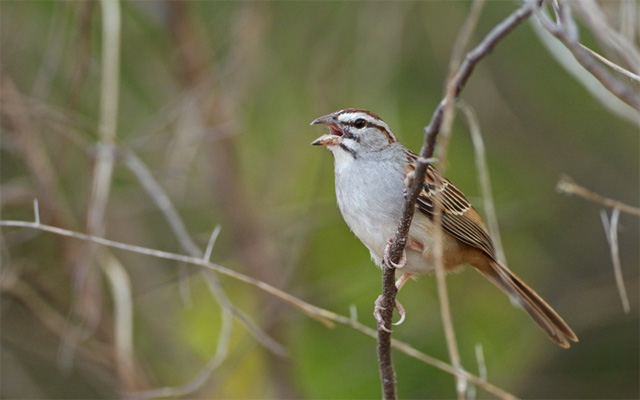
Sumichrast’s Sparrow
The tour finished in the beautiful Oaxaca Valley, which is home to a whole new suite of special birds (and tasty mole sauce and string cheese, among other food…yum). Our three days here sampled a variety of habitats, including cool pine-oak forest home to Red Warbler and Fulvous Owl (one of which nearly took our heads off – wow!) and scrubby oak woodlands with Slaty Vireo and Ocellated Thrasher. I don’t have many bird photos from this part of the tour, but I made sure to document one of our picnic lunches, complete with fresh guacamole – this was right before a pair of Sclater’s (Strong-billed) Woodcreepers came zooming in to the pine trees above our heads! It was an action-packed ten days, and suddenly the farewell dinner was upon us – I’m already looking forward to next year!
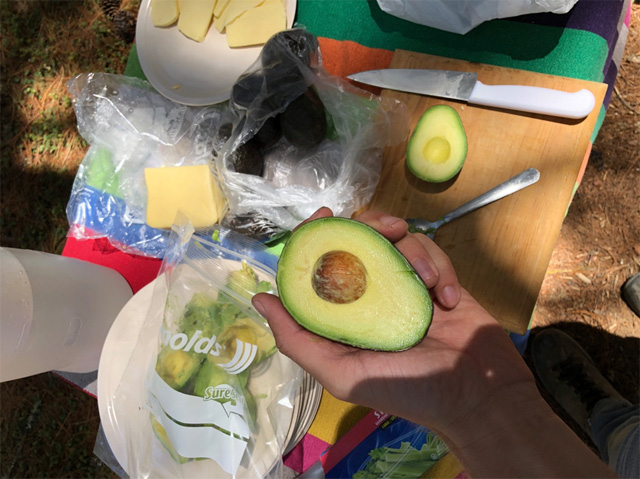
A picnic lunch in the making...
May 2:
Gavin Bieber and Evan Obercian on their recent tour, Florida: The South, the Keys and the Dry Tortugas
We started with a day in the dry pine forests and upland scrub of the central peninsula with fantastic views of a perched Bachman’s Sparrow, and a cooperative Florida Scrub Jay.
Bachman's Sparrow
Florida Scrub Jay
Day two found us successfully chasing some Caribbean strays, with excellent views of Bahama Mockingbird and Key West Quail-Dove.
Bahama Mockingbird
Key West Quail-Dove
A day trip out to the unique Fort Jefferson in the Dry Tortugas was sunny and hot but still produced 17 species of warblers and good views of both Masked and Brown Boobies.
Black-throated Blue Warbler
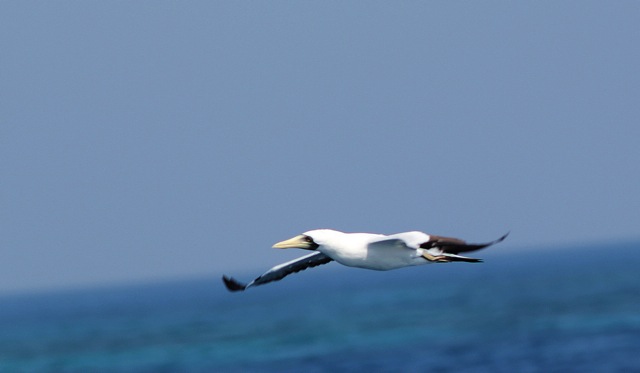
Masked Booby
We ended the tour north of Miami with a wonderful visit to a large wetland providing close up views of a wide array of waterbirds, from glowing Roseate Spoonbills to the more sedately coloured Limpkin and lots of nesting species such as these Wood Storks.
Roseate Spoonbill
Limpkin
Wood Stork
As always, Florida isn’t all about the birds, and this year we enjoyed excellent views of lolling West Indian Manatees, and a wealth of reptiles, amphibians, butterflies and even fish! I look forward to this tour every year, as it combines great eastern migration birding with Florida's highlight breeding species and even the occasional stray rarities from the nearby Caribbean.
April 21:
Gavin Bieber on his recent tour, Panama: Spring at the Canopy Tower
It is always a pleasure to return to the Canopy Tower and the Canopy Lodge, surrounded as they are by an excellent mix of habitats and a great diversity of birds. Some of the highlights this year around the tower included very confiding male Spot-crowned Ant-Vireo and Black-breasted Puffbird, a fantastic showing of the often reclusive Streak-chested Antpitta, displaying male Golden-collared Manakins, a dizzying array of hummingbirds including the superlative Crowned Woodnymph and even a group of Panamanian Night Monkeys peering out of their lofty roost cavity.
Thanks to David Fisher for all the images below except for Gavin's Night Monkeys.

Spot-crowned Antvireo
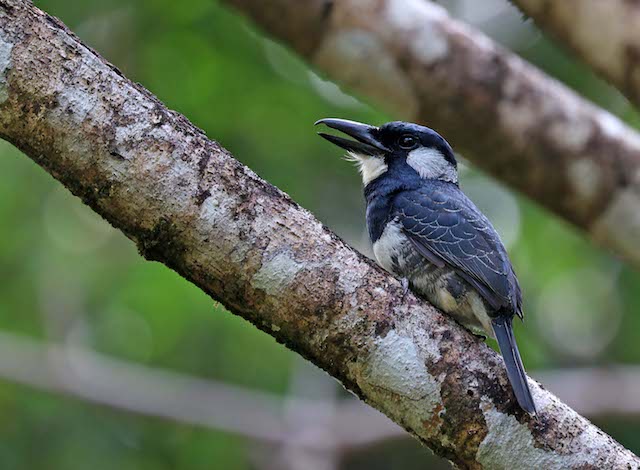
Black-breasted Puffbird
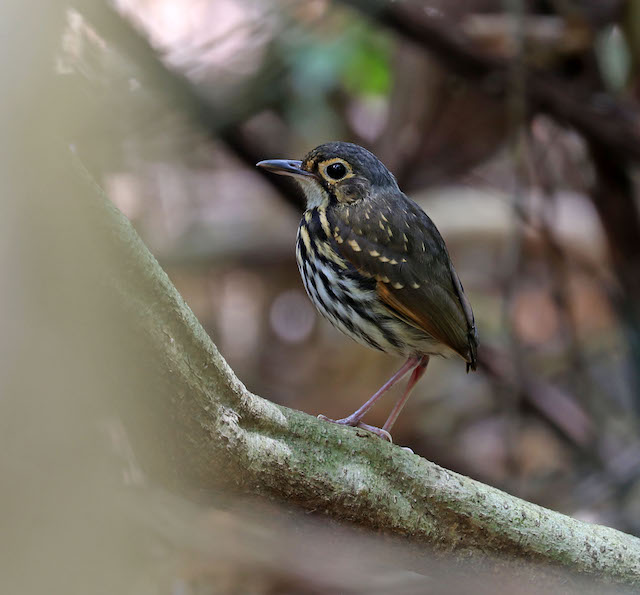
Streak-chested Antpitta
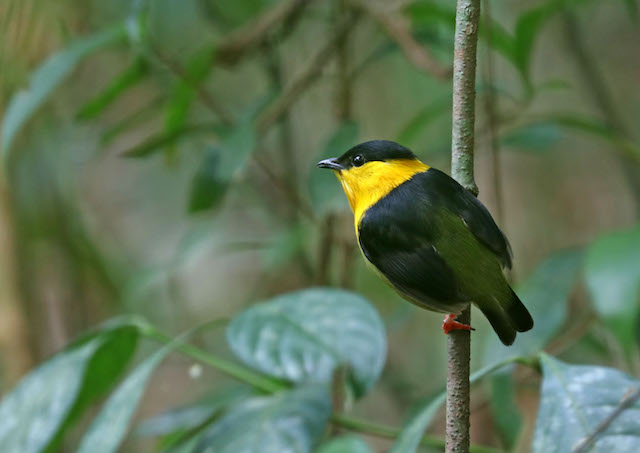
Golden-collared Manakin
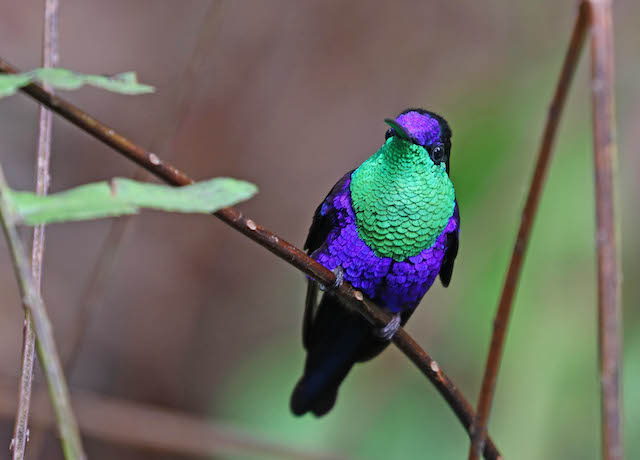
Crowned Woodnymph
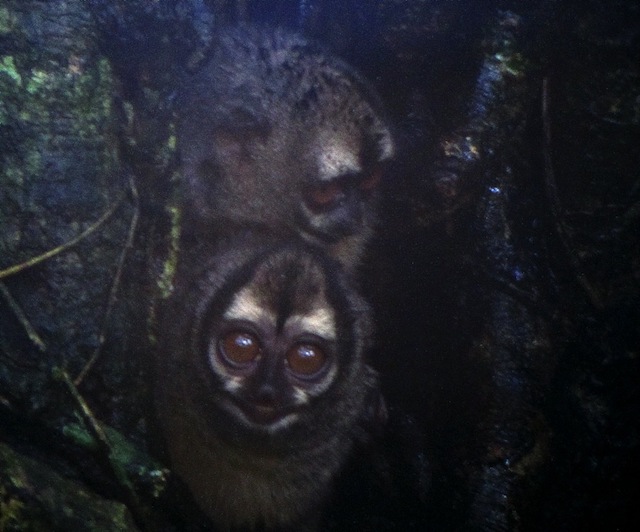
Panamanian Night Monkey
Around the more montane forests surrounding the lodge we added nearly 100 more species to the triplist, with a few of the highlights being lengthy views of a pair of Brown-billed Scythebills and daily encounters with gaudy Orange-billed Sparrows.
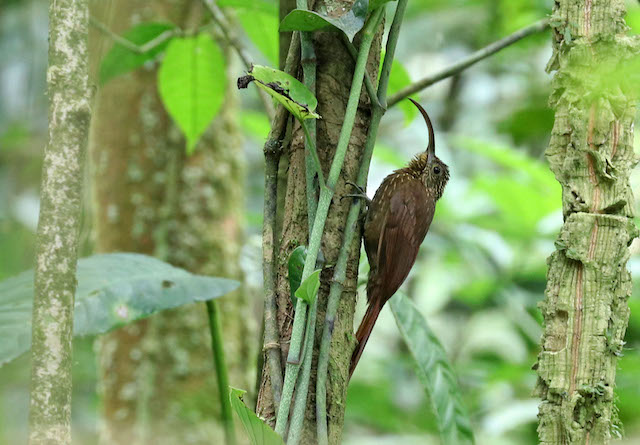
Brown-billed Scythebill
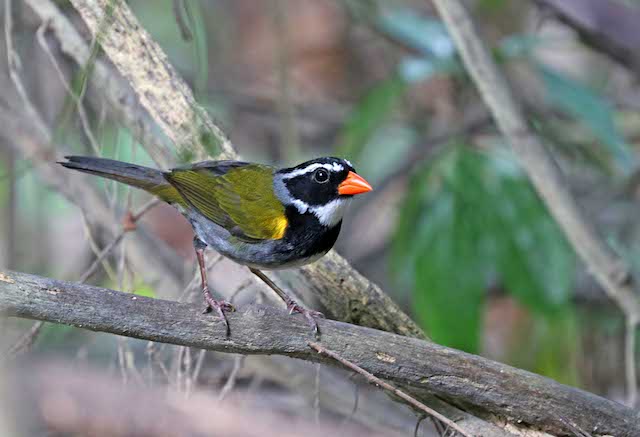
Orange-billed Sparrow
In all we tallied just shy of 370 species of birds, including an amazing 50 species of flycatchers, as well as 15 mammals and 16 species of reptiles and amphibians in 10 days in the field! This tour continues to impress me, as the diversity and richness of the region, paired with ease of access and the comforts of the lodge make for a truly wonderful experience.

